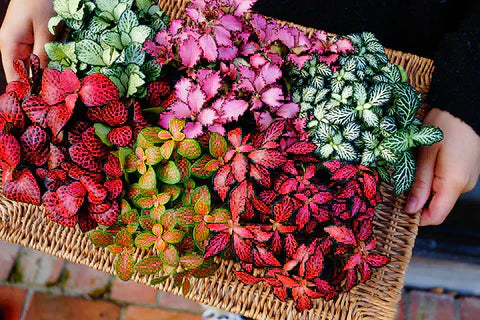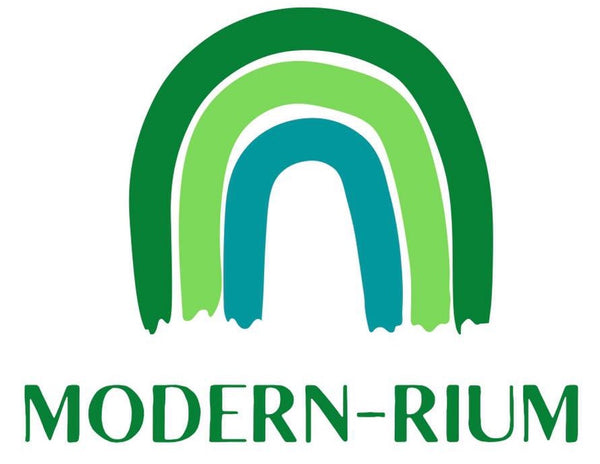
🌿 Top 10 Plants Perfect for Terrariums (And Why They Work)
Danny PhamShare
Terrariums are miniature, self-contained ecosystems that bring the beauty of nature indoors. But not every plant is suited for life behind glass. Choosing the right plants is essential for creating a healthy, low-maintenance terrarium that thrives in a closed or semi-closed environment.
Whether you're crafting a lush tropical world or a sleek desertscape, here are the top 10 plants perfect for terrariums—along with the reasons why they’re ideal choices.
1. Fittonia (Nerve Plant)
Best for: Closed terrariums
Why it works:
Fittonia thrives in humid, low-light environments—perfect for a sealed terrarium. Its colorful, veined leaves (green with white, pink, or red) add vibrant contrast to green foliage. It stays compact, making it ideal for small spaces.
2. Ferns (e.g., Maidenhair, Button Fern, Lemon Button Fern)
Best for: Closed terrariums
Why they work:
Ferns love moisture and indirect light. Their feathery, soft textures bring elegance and dimension. Choose dwarf or small species to prevent overcrowding.
3. Moss (Sheet Moss, Cushion Moss, Mood Moss)
Best for: Closed or partially closed terrariums
Why it works:
Moss is low-growing, requires no roots, and thrives in moisture-rich environments. It serves both decorative and functional purposes—retaining humidity and creating a forest-floor feel.
4. Peperomia (e.g., Peperomia caperata, Peperomia prostrata)
Best for: Closed or open terrariums
Why it works:
Peperomia species are compact, slow-growing, and tolerant of low light and humidity. Their unique leaf textures and shapes add diversity to your arrangement.
5. Pilea (e.g., Pilea glauca, Pilea depressa)
Best for: Closed terrariums
Why it works:
These small trailing plants have delicate leaves and thrive in humid conditions. They quickly form soft green carpets, creating visual flow throughout the terrarium.
6. Air Plants (Tillandsia)
Best for: Open terrariums
Why it works:
Tillandsia doesn’t require soil, which makes them perfect for decorative terrariums with rocks, sand, or driftwood. They love air circulation and just need occasional misting.
7. Miniature Orchids (e.g., Masdevallia, Lepanthes)
Best for: Closed terrariums with ample humidity
Why they work:
Mini orchids can add a surprising and exotic twist. Many of them prefer humid, stable environments, and their miniature size fits beautifully into well-controlled terrarium setups.
8. Succulents (e.g., Echeveria, Haworthia, Crassula)
Best for: Open terrariums
Why they work:
Succulents thrive in dry environments with good airflow and bright light. Their sculptural shapes and color variations are ideal for creating modern, low-maintenance terrariums.
⚠️ Note: Succulents do not belong in closed terrariums. Too much moisture can cause rot.
9. Creeping Fig (Ficus pumila ‘Quercifolia’)
Best for: Closed terrariums
Why it works:
This tiny-leaved vine is excellent for vertical interest and naturalistic, overgrown designs. It’s humidity-loving and slow enough not to overrun your space quickly.
10. Miniature African Violets (Saintpaulia spp.)
Best for: Closed or partially closed terrariums
Why they work:
These flowering plants offer color and charm in compact spaces. They enjoy stable warmth and humidity—conditions that terrariums can provide when well ventilated.
Final Thoughts
The right plant selection is key to creating a thriving terrarium. Each of the plants listed above is known for its adaptability, beauty, and suitability for the microclimates terrariums provide.
Whether you’re designing for a home, a modern office, or a hospitality space, terrariums offer a compact and elegant way to incorporate greenery—just make sure you choose the right green companions.
 is here! Shop now, pay later in 4 easy installments
is here! Shop now, pay later in 4 easy installments











